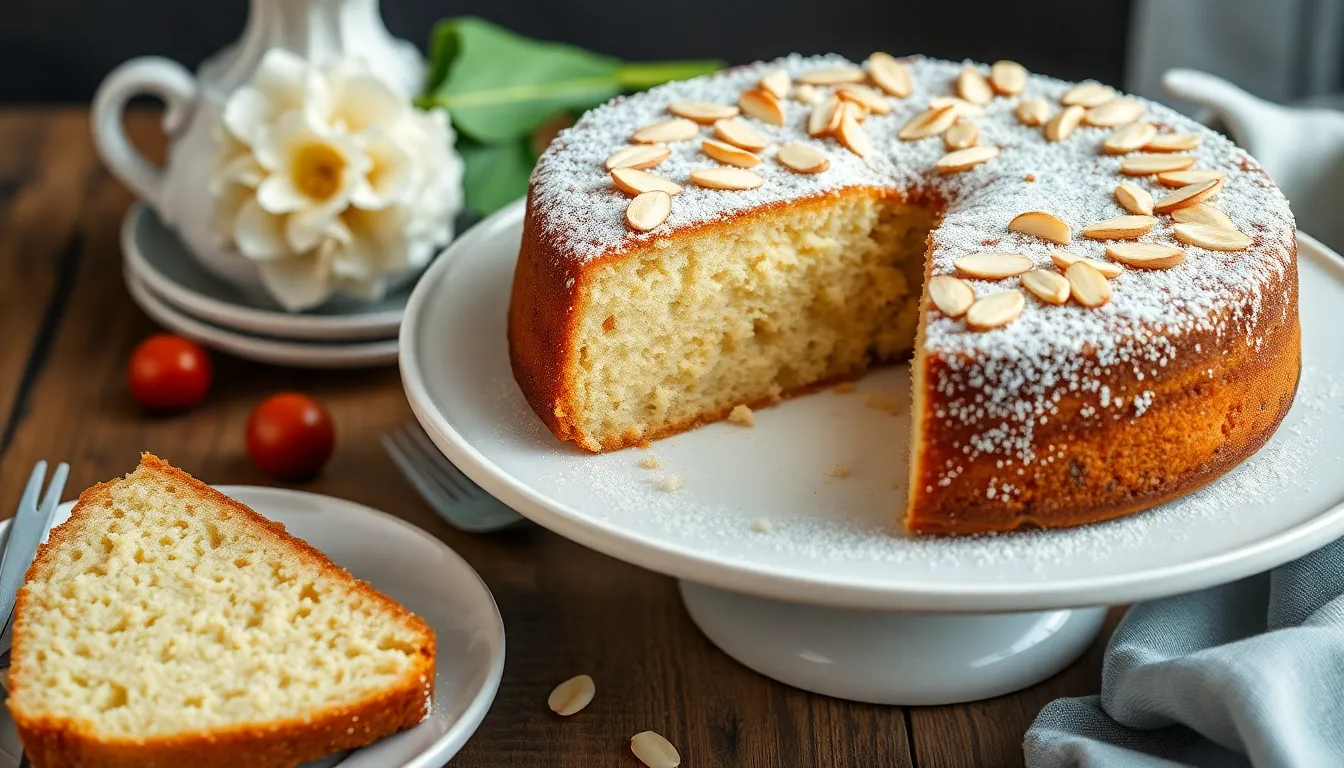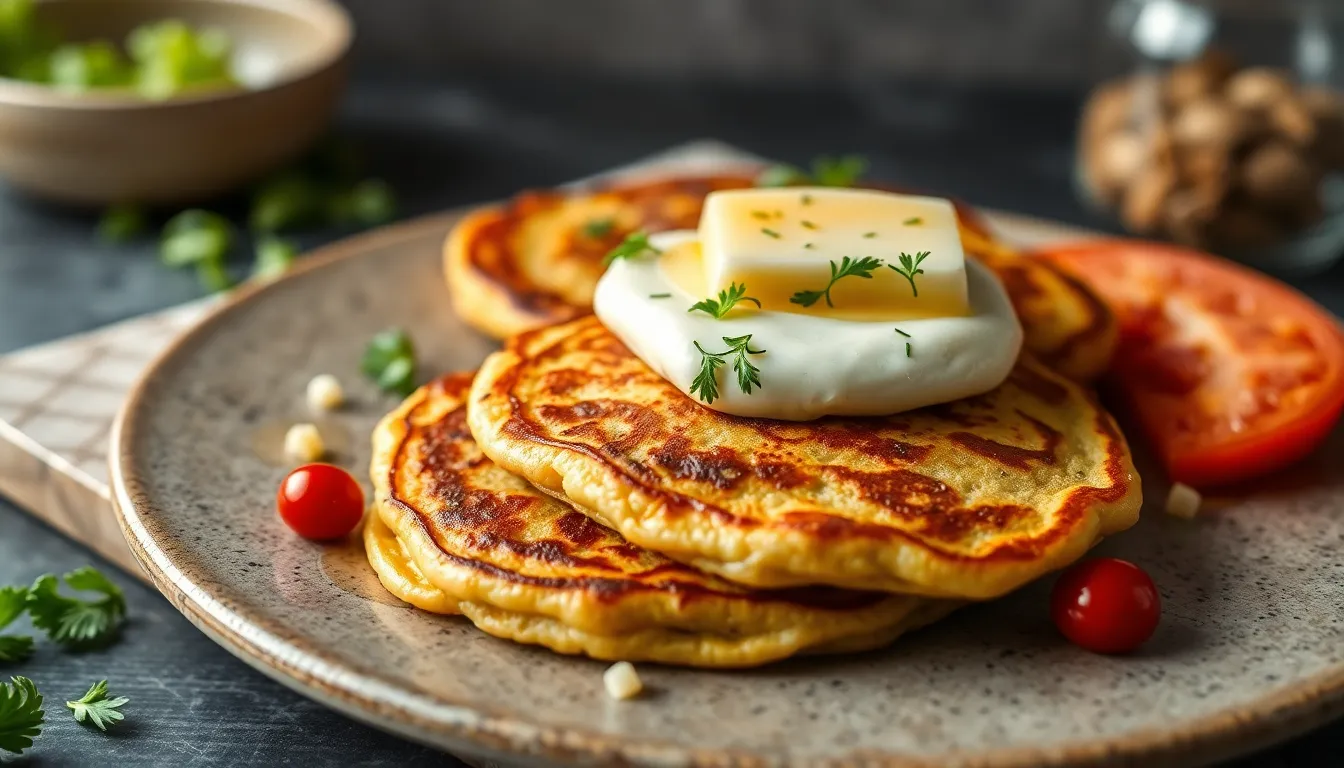How to Make a Classic Almond Cake: Tips and Tricks
Introduction
Almond cake, with its delicate flavor and moist texture, has long been a cherished dessert in many cultures. Its popularity stems from its versatility; it can be enjoyed as an everyday treat or dressed up for special occasions. The nutty aroma of almond flour, combined with the sweet richness of butter, creates a cake that is both satisfying and indulgent.
Mastering this classic recipe not only expands your baking skills but also provides a delicious addition to your dessert repertoire. In this post, you will learn about the essential ingredients, the necessary equipment, step-by-step instructions, creative variations, and tips for serving and storing your almond cake.
Section 1: Ingredients
To create the perfect almond cake, having the right ingredients is crucial. Below is a list of essential ingredients along with their quantities and any special notes that can enhance your baking experience.
- Almond flour: The star ingredient that gives this cake its unique flavor and texture.
- Sugar: Provides sweetness and contributes to the cake’s moisture.
- Eggs: Essential for binding the ingredients and adding richness.
- Butter: Unsalted butter is recommended for better control over the salt content.
- Vanilla extract: Enhances the overall flavor profile of the cake.
| Ingredient | Quantity | Notes |
|---|---|---|
| Almond flour | 2 cups | Use finely ground for best texture |
| Sugar | 1 cup | Granulated or powdered |
| Eggs | 4 large | Room temperature |
| Butter | 1/2 cup | Unsalted |
| Vanilla extract | 1 tsp | Pure vanilla preferred |
Section 2: Equipment Needed
Having the right tools can make the baking process smoother and more enjoyable. Here’s a list of equipment you’ll need to make a classic almond cake:
- Mixing bowls
- Measuring cups and spoons
- Electric mixer (alternatively, a whisk)
- Cake pan (8-inch round or square preferred)
- Cooling rack
When selecting your equipment, ensure your mixing bowls are large enough for the batter, the cake pan is non-stick or well-greased, and that your measuring tools are accurate for consistent results.
Section 3: Step-by-Step Instructions
Now that you have your ingredients and equipment ready, let’s get into the detailed process of making the almond cake:
- Preheat the oven: Set your oven to 350°F (175°C) to ensure it’s ready for baking.
- Prepare the cake pan: Grease your cake pan with butter or cooking spray and line the bottom with parchment paper for easy removal.
- Mix dry ingredients: In a bowl, whisk together the almond flour, sugar, and a pinch of salt to combine.
- Cream butter and sugar: In a separate bowl, beat the unsalted butter until creamy, then gradually add sugar and continue mixing until light and fluffy.
- Incorporate eggs and vanilla: Add the eggs one at a time, mixing well after each addition. Then, add the vanilla extract and combine.
- Gradually add dry ingredients: Slowly fold the dry mixture into the wet ingredients until just combined, being careful not to overmix.
- Bake and cool: Pour the batter into the prepared pan and bake for 25-30 minutes or until a toothpick inserted in the center comes out clean. Allow the cake to cool in the pan for 10 minutes before transferring it to a cooling rack.
Each step has its importance:
- Preheating the oven ensures even baking.
- Greasing the pan helps prevent sticking.
- Properly creaming the butter and sugar creates a light texture.
- Incorporating eggs individually allows for better emulsification.
- Folding in dry ingredients gently preserves the cake’s airiness.
Section 4: Variations and Add-ins
If you’re feeling adventurous, there are numerous ways to customize your almond cake. Here are some creative variations you can try:
- Add citrus zest: Lemon or orange zest enhances the flavor and adds a refreshing twist.
- Incorporate chocolate: Fold in cocoa powder for a chocolate almond cake or add chocolate chips for a delightful surprise.
- Explore gluten-free options: Substitute almond flour with a mix of coconut and tapioca flour for a gluten-free bake.
| Variation | Description | Tips |
|---|---|---|
| Lemon Almond Cake | Add lemon zest to batter | Reduce sugar slightly to balance the tartness |
| Chocolate Almond Cake | Fold in cocoa powder | Adjust baking time as needed to maintain moisture |
| Fruit-Topped Cake | Top with fresh fruits like raspberries | Serve with whipped cream for an added indulgence |
Section 5: Serving and Storage Tips
Once your almond cake is ready, it’s time to enjoy it! Here are some best practices for serving:
- Serve warm or at room temperature, perhaps dusted with powdered sugar.
- Pair with coffee or tea to enhance the flavors.
- Consider serving with a scoop of vanilla ice cream or a dollop of whipped cream for a decadent treat.
If you have leftovers, proper storage is key:
- Refrigerate: Store the cake in an airtight container in the fridge for up to a week.
- Freeze: To freeze, wrap the cake tightly in plastic wrap and then in aluminum foil. It can be frozen for up to three months. Thaw in the refrigerator before serving.
Conclusion
In this blog post, we have explored how to make a classic almond cake, diving into the essential ingredients, necessary equipment, detailed instructions, creative variations, and serving and storage tips. This recipe is not only straightforward but also allows for plenty of creativity!
We encourage you to try your hand at baking this delicious almond cake, and don’t hesitate to experiment with different flavors and variations to make it your own. Share your experiences or variations in the comments below; we’d love to hear from you!




